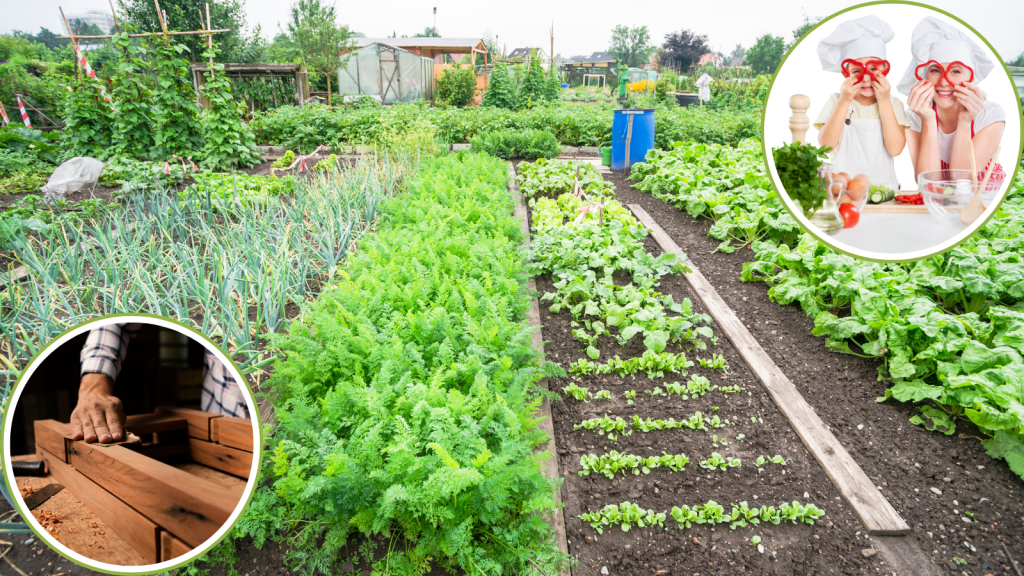We’ve been practicing what I call “quiet preparedness” for more than two decades now. When we first started focusing on self-reliance, we noticed there were essentially two approaches to preparing for uncertainty: the loud, gear-heavy “survivalist” approach that draws a lot of attention, and the quieter, skills-based approach that blends seamlessly into everyday life.
After years of experience, I’m convinced that quiet preparedness not only works better but also creates a more sustainable and fulfilling lifestyle. Let me explain why we’ve chosen this path and how it might serve you better too.
The Problem with “Loud” Survivalism
Most of us have seen the stereotype: the person with military-style gear, tactical everything, and enough freeze-dried food to last through multiple apocalypses. While having supplies isn’t inherently bad, this approach comes with several disadvantages we’ve observed over the years.
First, “loud” survivalism tends to be incredibly expensive. Those freeze-dried meal buckets advertised to last 25 years? They’ll set you back thousands of dollars for a family and often contain foods you’d never choose to eat otherwise. The tactical gear, special vehicles, and branded survival equipment create a massive financial burden that most families simply can’t sustain.
Second, this approach tends to focus heavily on gear acquisition rather than skill development. I’ve met plenty of people who own expensive water filtration systems but couldn’t identify safe natural water sources if their lives depended on it. They have survival knives but don’t know basic knife skills for processing wood or food.
But perhaps most importantly, loud survivalism creates unnecessary social vulnerability. When everyone knows you’re “that prepper” with all the supplies, guess where people will come knocking when things get tough? Your visibility becomes a liability.
Last winter, when an ice storm knocked out power in our area for nearly a week, we noticed something interesting. The houses with obvious generators running became social hubs—and not in a good way. Meanwhile, our woodstove kept us warm, our pantry kept us fed, and our low-profile approach kept us secure.
What Quiet Preparedness Looks Like

Quiet preparedness is fundamentally different in philosophy and practice. Rather than focusing on acquiring special “survival” supplies that sit unused until disaster strikes, quiet preparedness integrates resilience into everyday living.
In our household, this looks like:
Growing a productive garden. We grow vegetables we actually eat, focusing on calorie-dense and storage-friendly varieties like potatoes, winter squash, and dried beans. Nothing about our garden screams “prepper”—it just looks like a productive home garden that provides fresh produce in season and preserves for winter.
Preserving food as a normal activity. Rather than buying expensive freeze-dried specialty foods, we preserve our garden surplus and seasonal bargains through canning, dehydrating, and fermenting. This creates a rotating pantry of foods we already enjoy eating, not emergency rations we’d dread opening.
Learning practical skills. From basic carpentry to cooking from scratch, we focus on skills that improve our daily lives while building resilience. These skills make us more self-sufficient every day, not just during emergencies.
Building community connections. Instead of an isolationist “us versus them” mentality, quiet preparedness recognizes that humans are social creatures. We connect with neighbors through seed swaps, tool sharing, and regular community events, building the social capital that’s crucial during difficult times.
Maintaining multiple systems. We heat primarily with wood but have propane backup. We have grid power but know how to function without it. Every essential system has redundancy built in, but nothing screams “we’re preparing for disaster.”
The beauty of this approach is that it doesn’t look like you’re preparing for anything beyond a thoughtful, self-reliant lifestyle.
Financial Benefits of Quiet Preparedness
One aspect of quiet preparedness that doesn’t get enough attention is its financial sustainability. Unlike the “buy all the gear now” approach, quiet preparedness spreads investments over time and integrates them into your normal budget.
When we installed raised beds in our yard, we didn’t frame it as a “survival garden” project. It was simply improving our property and food production capabilities. The investment paid for itself within two growing seasons through reduced grocery bills.
Similarly, learning to repair instead of replace household items saves money immediately while building valuable skills. Each cast iron pan restored, each piece of clothing mended, each appliance fixed represents both immediate savings and increased resilience.
Our modest pantry system—rotating foods we actually eat rather than storing specialty “survival” items—means we always eat the oldest food first. This eliminates waste and allows us to buy in bulk when prices are low, saving substantial money over time.
Compare this to spending thousands on food you hope never to eat, gear that sits unused, and systems that aren’t integrated into daily life. The financial difference is staggering.
Social Advantages of Staying Under the Radar
Perhaps the most compelling reason for quiet preparedness is the social advantage it provides. In uncertain times, being known as “the person with all the supplies” can put a target on your back—figuratively or literally.
We’ve chosen instead to be known for other things: the family that always has extra garden seeds to share, the household that knows how to fix things, the neighbors who can help with a small carpentry project. These reputations serve us far better than being known as “the preppers.”
This approach also avoids the social isolation that often comes with the traditional survivalist mindset. Being the “lone wolf” prepared to defend your stockpile against all comers isn’t just psychologically unhealthy—it’s practically unsustainable. Humans succeed through cooperation, not isolation.
During the major flooding that hit our area a few years ago, the strongest response came not from the most visibly prepared individuals, but from connected communities. Neighbors with tractors pulled out stuck vehicles. Families with extra space housed the displaced. Those with cooking skills prepared communal meals. The web of interdependence proved far stronger than any individual preparation could have been.
Practical Tips for Shifting to Quiet Preparedness
If you’re interested in moving toward this more sustainable approach, here are some practical steps we’ve found effective:
Start with food independence. Begin growing some of your own food, even if it’s just herbs in pots or tomatoes on a balcony. Learn to preserve seasonal abundance through simple methods like freezing or water-bath canning. Build a modest pantry of foods you actually eat, rotating through them regularly.
Develop everyday useful skills. Focus on learning skills that improve your daily life: cooking from scratch, basic home repairs, mending clothes, growing food. These skills make you more resilient without broadcasting your preparedness mindset.
Reduce dependencies thoughtfully. Look at what you depend on others for and gradually develop alternatives. If you rely entirely on grocery stores, start growing some food. If you depend completely on the power grid, develop alternative lighting and cooking methods. Do this incrementally, without announcing your motivations.
Build community connections. Get to know your neighbors. Participate in community events. Share extra garden produce. Offer to teach skills you’ve mastered. These connections build resilience far beyond what any individual household can achieve alone.
Practice everyday carries. Rather than tactical gear, focus on having genuinely useful items with you daily. A quality pocket knife, small flashlight, and basic first aid supplies can help with everyday tasks while preparing you for unexpected situations.
Be frugal but strategic. Instead of buying specialized survival gear, invest in quality tools and equipment that serve daily purposes while providing emergency utility. A good cast iron pan works on any heat source. Quality wool blankets serve every day and during power outages.
Finding the Right Balance
There’s no universal template for preparedness that works for everyone. Our approach has evolved over years of trial and error, finding what works for our specific situation.
The key insight we’ve gained is that preparedness works best when it’s woven into the fabric of everyday life—not treated as a separate category of activity. The raised beds that give us fresh vegetables all summer become our food security in uncertain times. So does knowing how to safely forage. The woodstove that creates a cozy atmosphere becomes our heating and cooking source during power outages.
Most importantly, quiet preparedness allows for a mindset of abundance rather than scarcity. Instead of stockpiling out of fear, we build capacity out of a desire for a more self-determined life. This positive motivation sustains us through the inevitable challenges and setbacks.
For us, quiet preparedness has proven not just more effective in building actual resilience, but more fulfilling as a way of life. There’s deep satisfaction in developing real skills, producing tangible goods, and building genuine connections—benefits we enjoy regardless of whether any “disaster” ever materializes.
And when challenges do come—whether it’s a week-long power outage, unexpected job loss, or supply chain disruption—we face them not as survivalists but simply as people who’ve built a more resilient way of living.
That’s the real power of quiet preparedness: it serves you well in good times and bad, without the expense, social complications, or psychological burden of the “loud” alternative.
Remember that the goal isn’t to prepare for some hypothetical apocalypse, but to build a more skillful, connected, and resilient life that serves you well under any circumstances. That’s why quiet preparedness will always be more sustainable than loud survivalism.
James is a former logistics coordinator and wilderness safety instructor, whose practical experience taught him the value of sensible preparedness and calm resilience. Passionate about self-reliance, James teaches everyday skills—like water purification, emergency communication, and outdoor safety—to help people confidently handle life's disruptions without fear or overwhelm. His approachable style combines real-world insights with relatable, personal stories and experiences.



